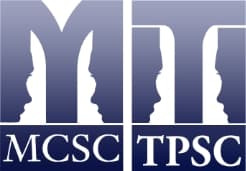1. What is the difference between body contouring and body sculpting?
These terms are often used interchangeably. While some consider “body contouring” applies to non-invasive treatments like liposuction, while “body sculpting” applies to surgical procedures, others will in fact say the opposite; e.g. CoolSculpting® is a non-invasive way to alter body shape using extreme cold to kill fat cells (cryolipolysis).
2. What areas of the body can be contoured by nonsurgical methods?
CoolSculpting is the most commonly used, most successful and most popular form of non-invasive body contouring. Areas that can be treated with non-invasive means of body contouring include the chin, the arms, the tummy, and the outer hips (flanks), and the thighs (saddle bags). BELKYRA™ (an injectable medication used to shrink fat), can also reduce fat in the chin area, and a newer, novel area of treatment for BELKYRA is jowls!
3. What areas of the body can be contoured with liposuction?
In contrast to non-invasive lipolysis, liposuction can be performed on almost any area where there is unwanted fat. However, the common areas where liposuction is done include the same areas targeted by non-invasive methods, i.e. under the chin (to treat double chin), the arms, hips, tummy and outer thighs. Other areas include the breast area, usually done in males to reduce male breast tissue, and also often required during female breast reduction surgery to give the breast a good shape by eliminating the “tail” of fatty tissue that extends into the underarm. Liposuction is also an option around the knees to reduce fat on the outer or inner area of the knee to give legs a slimmer and more youthful appearance.
4. Are there advantages of liposuction over non-invasive body contouring?
In general, larger amounts of fat can be removed with liposuction than in treatments like CoolSculpting or BELKYRA, and a larger area can be treated.
The fat can also be removed more reliably and in a more targeted way with liposuction. In non-invasive procedures, the results are less predictable, and it is far less possible to dictate the exact area of fat to be removed, whereas in liposuction procedures the surgeon is able to specifically move the cannula to remove fat from the desired area.
While downtime is slightly less with non-invasive body contouring, frequently many repeat treatments are required, which can mean it is costly. In liposuction, usually patients require one treatment, and occasionally one touchup procedure. This can sometimes mean that cost is less with liposuction.
While in theory it is possible to treat a couple of areas at the same time with non-invasive methods, liposuction can be done over several areas during the same treatment.
5. When is liposuction not enough? What are the other surgical options for body contouring?
There are many other surgical procedures designed to contour the body. These not only reduce unwanted fat, but also get rid of redundant or hanging skin. Whether the skin over an area of fat is tight or loose and hanging is the main determinant of when liposuction is not enough.
When skin is lax, removing the fat alone with liposuction will not give a desirable contour, but instead would leave you with more loose hanging skin. That is where surgical procedures can help.
A common setting in which body contouring surgeries are needed is in patients who have lost huge amounts of weigh with bariatric surgery, through gastric banding or stapling, or with drugs like Ozempic. In these patients, the significant laxity of skin that accompanies the weight loss must be addressed by procedures beyond liposuction. These include:
6. Are body contouring surgeries safe, and are patients happy with their results?
The good news is that significant advances in surgical techniques, anaesthesia, and pre- and post-op analgesia have significantly improved the experience and outcomes for patients, making these surgeries safer.
Surveys show a very high rate of satisfaction among patients who have undergone these surgeries – among the highest for any cosmetic medical procedures. Not surprisingly they are increasing in popularity – for example, statistics show a marked increase in the number of arm lift surgeries performed in North America in the last few years (done to get rid of so-called “bat wings” (the loose, hanging skin and fat many patients hate to see when they raise or stretch their arms). New techniques to hide the scars of brachioplasty in the armpit in appropriate patients have meant improved appearance of scars (as have better post-op topical creams and laser treatments).
Among the happiest patients are those who undergo combination surgeries after huge weight loss- this is sometimes referred to as “body lift” surgery. In addition to the above surgeries, body lift surgery can include breast lift as well. For excess fat and skin around the trunk, a “belt lipectomy” is sometimes done, which addresses not only lower tummy fat but allows for circumferential removal of tissue, addressing fat and skin of the back as well.
Historically, tummy tuck and other body contouring surgeries were said to require patients to have an optimal BMI (body mass index). However, tummy tuck, and other body contouring surgeries can now be considered in those with higher BMIs in certain circumstances, so called “high BMI tummy tuck” or “plus size tummy tuck.” It’s all about evaluating safety and health risks.
Dr. Weinberg is known for his expertise in body contouring and body lift surgeries ( see examples of some of his real cases in our photo gallery). He will discuss your health, answer all your questions, and evaluate carefully whether these surgeries are right for you in a detailed consultation.
If you want more information about body contouring or body lift surgery after large weight loss, call our Mississauga location at (905) 273-3045 or our Toronto location at (416) 207-9090 or request a consultation online.


Leave a Reply